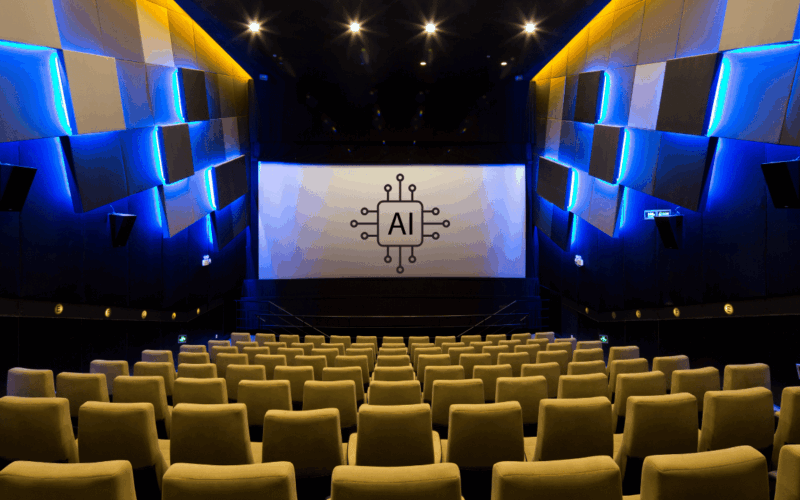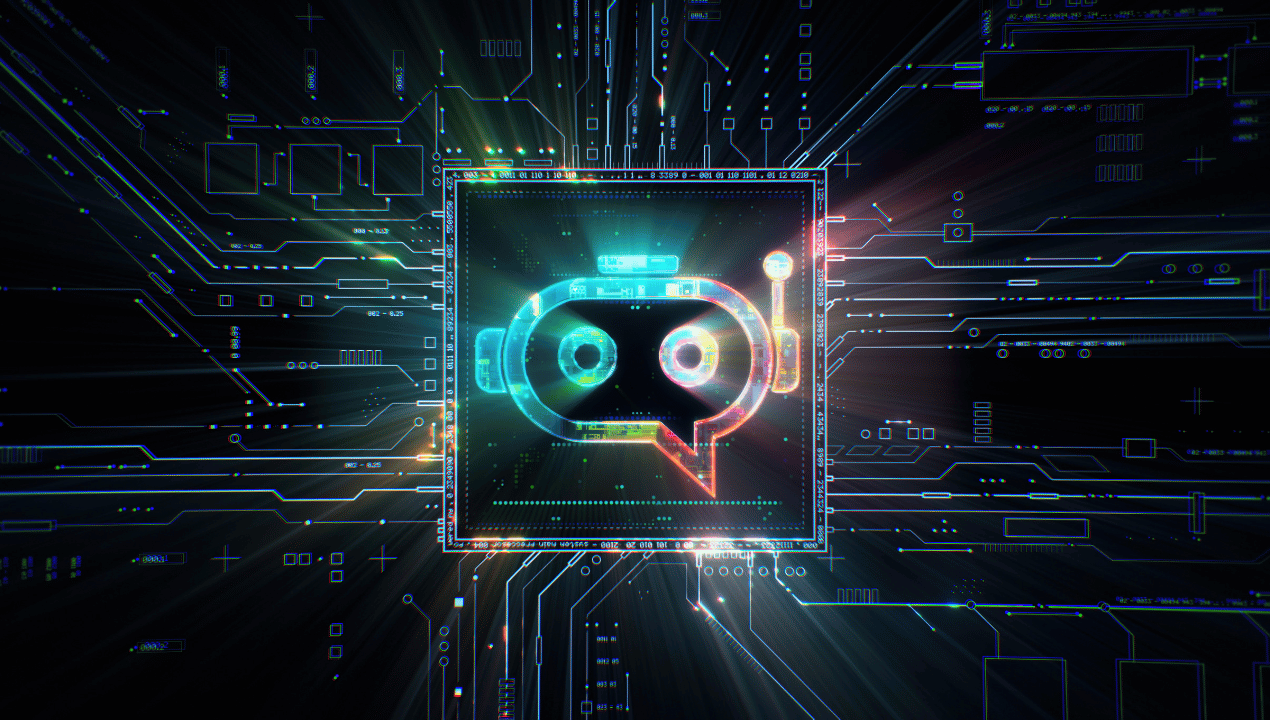Cinema has always been shaped by technology. From silent films to color, from CGI to 3D, every era of filmmaking has been defined by what was possible at the time. In this article, we’ll explore the AI in cinema, the complete guide to artificial intelligence’s impact on filmmaking, and the future of movies.
Now, in 2025, a new force is shaping the stories we watch and how they’re made artificial intelligence.
But AI in cinema isn’t just about fancy effects or faster editing. It’s changing the way stories are written, scenes are planned, characters are created and even how movies are marketed. And as it continues to evolve, it’s raising questions, opportunities and challenges the industry has never faced before.
Whether you’re a filmmaker, a producer, a cinephile or just curious about the future of movies, this guide breaks down what’s really happening with AI in cinema and where it’s headed next.
Why AI in Filmmaking Is No Longer Science Fiction
For years, AI was a background player in film production. It helped with scheduling, subtitles, or visual effects clean-up.
But 2025 marks a turning point.
AI is now actively involved in the creative process. It can co-write screenplays, generate concept art, simulate actor performances, and even help direct scenes with virtual cinematography tools. What used to take teams of people weeks or months can now be done in days.
And this isn’t just happening in indie experiments. Major studios are using AI to shape trailers, forecast box office returns, and personalize streaming experiences at scale.
Let’s break down exactly where AI is showing up on the production line.
Cinema AI Table: Where AI Is Used in Modern Filmmaking
| Stage of Filmmaking | AI Application | Real-World Use Case |
|---|---|---|
| Scriptwriting | Generating dialogue, structuring plots | Writers using GPT-based tools to brainstorm scenes |
| Pre-production | Budgeting, location scouting, casting | AI predicts costs and ideal filming locations |
| Storyboarding & Art | AI-generated concept art and storyboards | Tools like Midjourney help visualize scenes |
| Casting | Digital doubles, synthetic actors | Creating digital likenesses for stunts or scenes |
| Shooting & Direction | Virtual cinematography and AI camera tools | Smart framing and lighting assistants |
| Editing | Auto-tagging, scene detection, assembly | Adobe Sensei for editing speed and precision |
| VFX & Animation | AI-based face replacement, scene expansion | De-aging actors or extending backgrounds |
| Marketing & Distribution | Trailer generation, audience targeting | Netflix using AI to test trailers and thumbnails |
What’s clear is this: AI is no longer just a tool. It’s becoming a collaborator.
Writing Stories with Cinema AI: Collaboration, Not Replacement
One of the most controversial uses of AI is in screenwriting. Tools like ChatGPT, Sudowrite or Jasper can generate story ideas, dialogue exchanges or even full drafts.
But professional screenwriters aren’t being replaced they’re being supported. AI can:
- Speed up early ideation by suggesting plot arcs
- Provide variations on dialogue or character responses
- Help overcome writer’s block during rewrites
- Offer multilingual translations for global productions
The key is collaboration, not automation. Great writing still needs human judgment, emotion and nuance. AI can get you 60% of the way, but it’s the filmmaker who finishes the job.
AI-Powered Pre-Production: Planning Smarter, Faster
Before a single frame is shot, AI can optimize key elements of the shoot:
- Script breakdown tools identify every prop, location and character automatically
- Budgeting software predicts costs based on similar past projects
- Casting tools analyze actor fit using facial analysis, voice tone and past audience data
- Location matching algorithms help scout ideal places that fit both vision and budget
This cuts weeks off the planning phase and reduces costly last-minute decisions.
Virtual Actors, Digital Doubles and Ethics
Deepfake and motion capture technology have evolved dramatically. In 2025, AI can create realistic synthetic actors for background scenes, stunts or reshoots.
Studios can now:
- Generate a younger version of an actor
- Clone voices to match dialogue
- Replace a stand-in’s face with the lead actor in post-production
- Create digital extras for crowd scenes
While it opens creative flexibility, it also raises ethical questions about consent, performance rights, and the very nature of acting.
Should an actor be paid if their AI double appears in a scene they didn’t film? What happens when an actor passes away, but their digital likeness keeps working?
The industry is actively debating these questions, and new contracts now often include clauses about digital rights and AI reproduction.
Cinema AI in Post-Production: Speed and Precision
Once shooting wraps, AI becomes the editor’s best friend.
Modern tools can:
- Identify the best takes using emotion recognition
- Automatically tag scenes, characters and props for fast searching
- Color match footage across different cameras and lighting setups
- Sync audio, dialogue and music beats in seconds
- Create draft cuts that editors can refine instead of starting from scratch
Post-production used to take months. With AI, it can now take weeks or less.
Marketing Films with AI: Trailers That Sell
AI has transformed how films are with marketing too. Studios no longer rely solely on gut instinct or test screenings.
Now, they use AI to:
- Generate trailer edits based on emotional pacing and genre norms
- Create alternate thumbnails or teaser variations for different demographics
- Predict audience interest in regions or age groups
- Tailor ads dynamically on platforms like TikTok or Instagram based on viewer data
This data-driven approach means better targeting, higher ROI and trailers that actually convert to tickets or streams.
Streaming Platforms and Personalization
Netflix, Amazon, Hulu and Disney+ are all using AI under the hood. So, not just to recommend what you should watch next.
Streaming platforms use AI Impact Filmmaking Movies to:
- Adjust episode thumbnails based on what you’ve clicked in the past
- Test different intros, scenes or even endings based on audience retention
- Deliver dynamic pricing or subscription offers
- Forecast what kinds of original content will perform well
In the future, the same film might be under editions slightly differently depending on who’s watching all thanks to AI.
Cinema AI in Independent Filmmaking & Movies: Leveling the Playing Field
Perhaps the most exciting development is how AI is helping independent creators.
With tools that used to cost thousands now available for free or on subscription, indie filmmakers can:
- Write scripts with AI assistance AI Impact Filmmaking Movies
- Create posters or trailers using visual AI tools
- Edit films using auto-suggestion features
- Distribute globally with AI-generated subtitles or voiceovers
The gatekeepers are fading. Anyone with a story can now make a film and compete.
What AI Can’t Do (Yet)
Despite all its power, AI still has limits.
- It can’t create emotional authenticity
- It struggles with nuanced subtext and tone
- It lacks contextual awareness beyond its training
- It doesn’t know how to make creative leaps or break the rules effectively
At least not yet. AI Impact Filmmaking Movies
That’s why human creativity still leads. The best AI-enhanced films are those where humans direct the vision and let AI do the heavy lifting, not the heart work.
The Future: What Comes Next?
Here’s where AI in cinema might go next:
- Real-time AI-generated storyboards during brainstorming sessions
- Fully AI-personalized short films delivered to your taste
- AI tools that score music based on on-screen emotion
- Real-time voice translation for global releases
- AI-created characters that evolve with audience interaction
As virtual reality and augmented reality expand, AI will shape immersive narratives that are dynamic, interactive and user-driven.
We’re entering an era where stories adapt to us, not the other way around.
Final Thoughts: The Director’s Chair Isn’t Going Anywhere
AI is changing filmmaking fast. But it’s not replacing filmmakers. It’s amplifying them.
Think of it like this: AI is the assistant that helps you prep, plan and polish. But the vision? That’s still yours. The connection with the audience? That’s still human.
Whether you’re building the next indie hit, producing big-budget epics, or just watching from the front row, one thing is clear.
The future of cinema will be powered by AI but told by humans.








